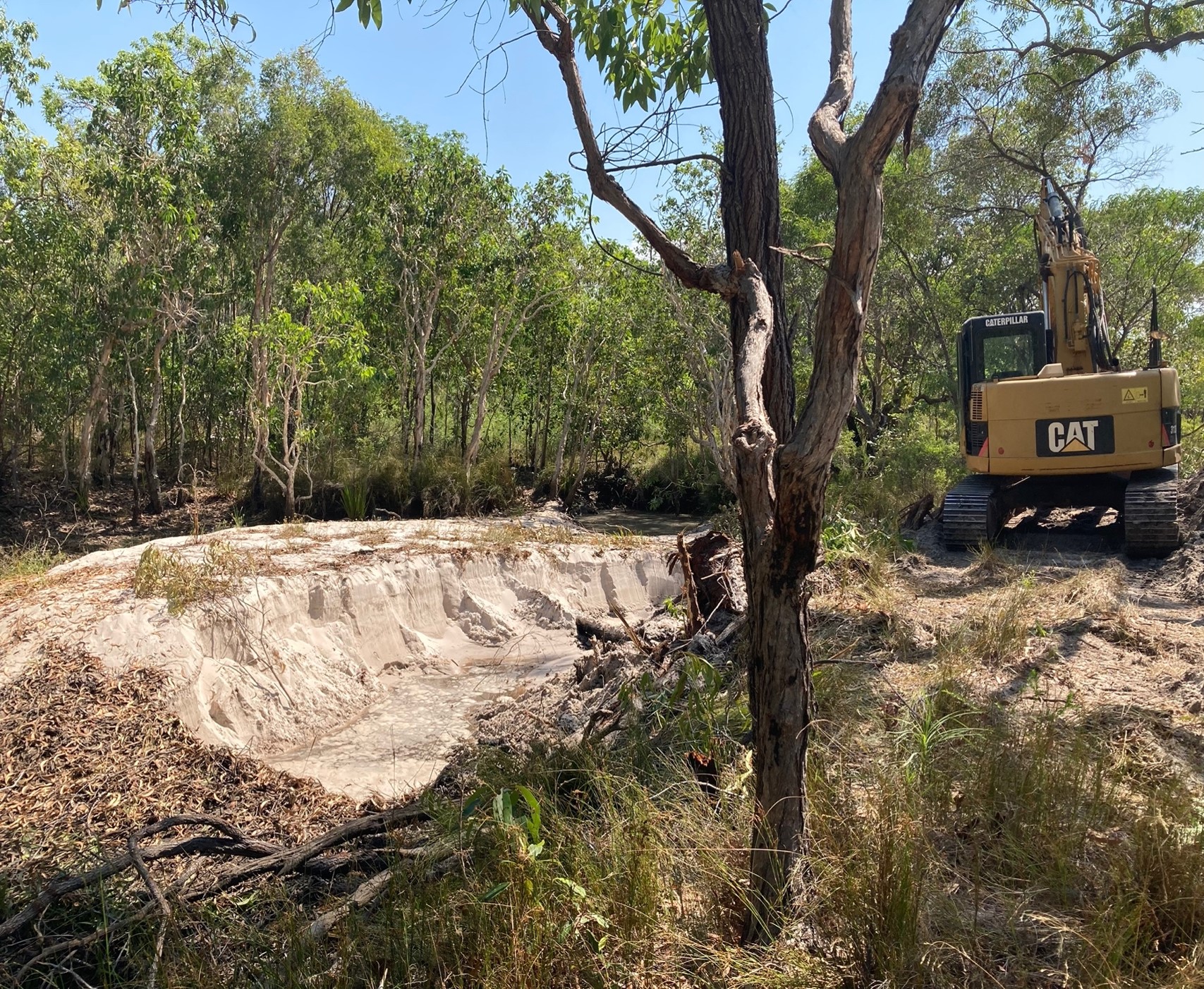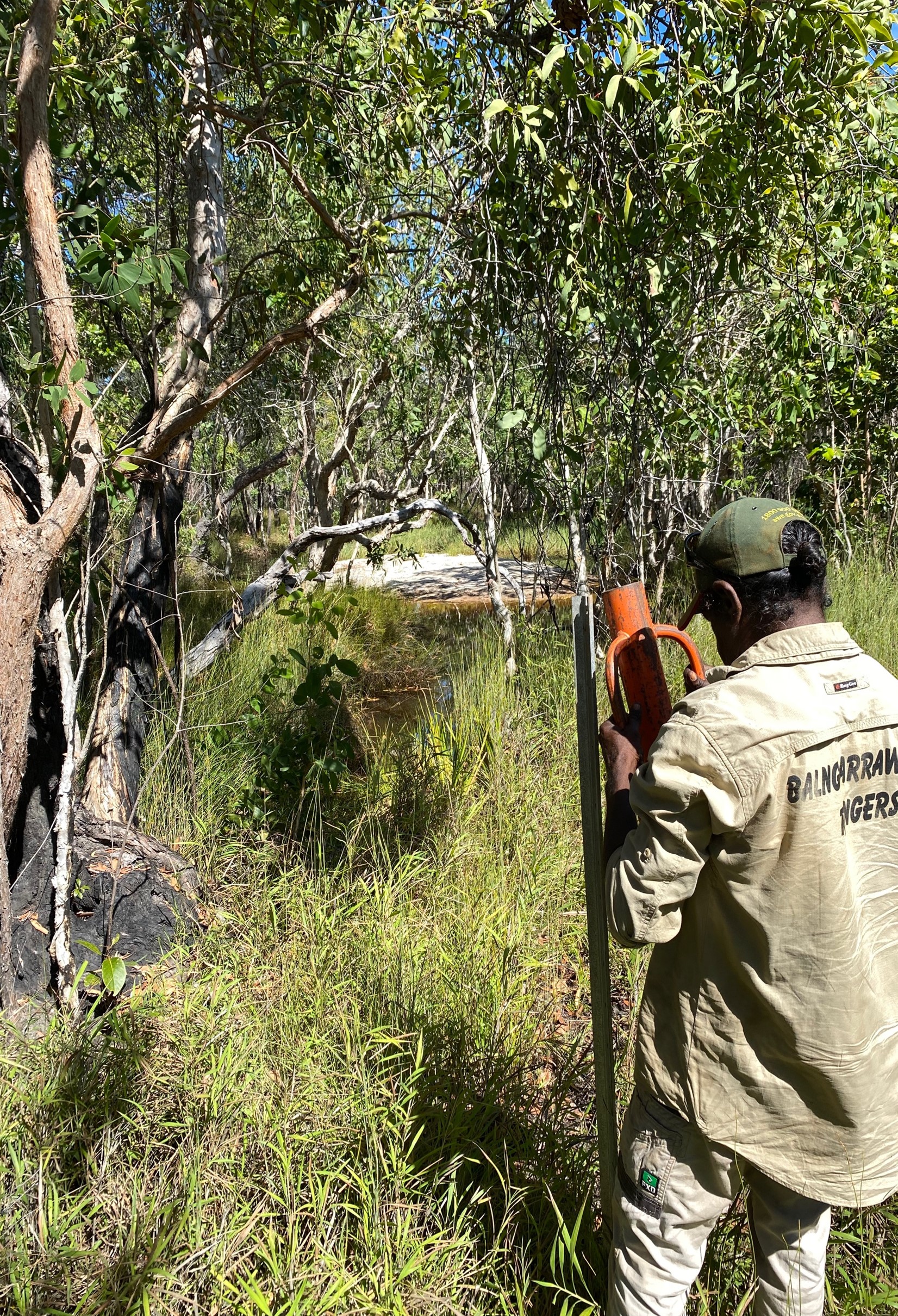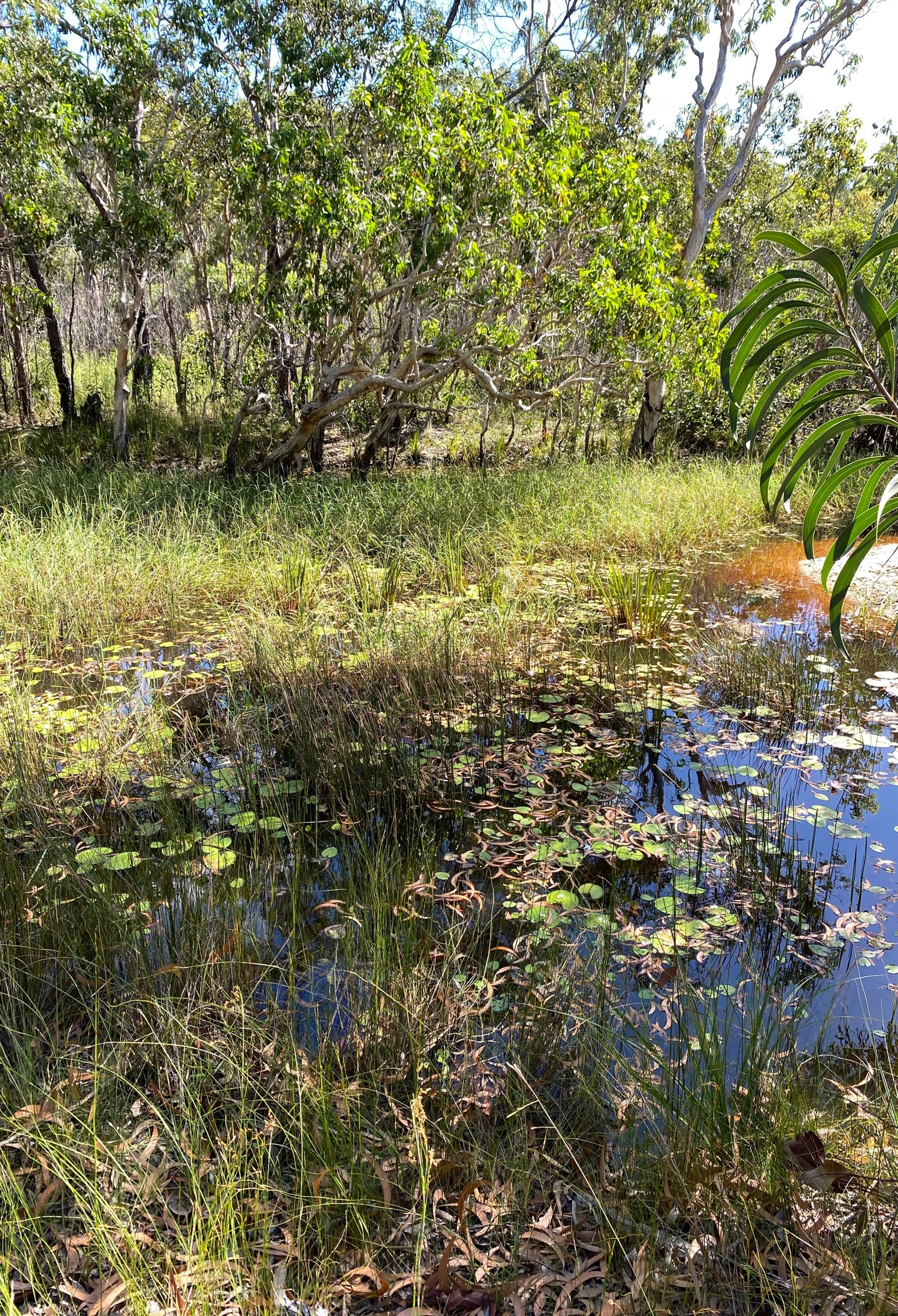Balnggarrawarra Melsonby Rangers improve wetland water quality






Aims and overview
The Balnggarrawarra Melsonby Rangers are dedicated to improving the water quality of their waterways. They embarked on a project to rehabilitate a lagoon in Round Loop wetland, filled with eroded soil from a property track during a 2018 flood. As Balnggarrawarra Traditional Owners, the Rangers have deep cultural connections with their wetlands, creeks, and the Normanby River. Round Loop wetland on Melsonby Station is a vital water and food source for native animals in the area and holds immense cultural significance. It provides a place for hunting, fishing and cultural activities. The flood-induced sedimentation transformed the lagoon and reduced its ecosystem function, leading to the need for urgent rehabilitation efforts.
Activities and outcomes
Before commencing restoration activities, a wetland assessment was conducted with support from South Cape York Catchments and the Department of Environment, Science and Innovation. This served as a baseline to evaluate the effectiveness of their rehabilitation efforts and allowed the Rangers to develop a targeted restoration plan.
The Rangers used an excavator to remove the accumulated sand and soil from the lagoon, restoring its natural depth and profile. To prevent future erosion and sedimentation, the drainage system leading into the lagoon was reshaped, ensuring that the property track would not deposit eroded sediment during future floods. By carefully considering erosion control measures, the Rangers recreate a resilient wetland ecosystem.
Following the removal of sediment and reshaping of the drainage system, the restored lagoon was left untouched during the next wet season, providing an opportunity for natural revegetation. Over the wet season, many native plants recolonised the area.
The Rangers did not expect the wetland to rehabilitate so effectively in one single wet season. To assess the effectiveness of their restoration efforts, the Rangers conducted another wetland assessment. The condition score of the lagoon indicated a significant improvement compared to the pre-restoration assessment. Native aquatic vegetation, such as water lilies (Nymphae), marshworts (Nymphoides), bladderwort (Utricularia) and bulburu sedge (Eleocharis) now flourish within the lagoon indicating improved water quality.
Learnings and next steps
The successful rehabilitation of the lagoon holds promising implications for the ecosystem and the Balnggarrawarra Melsonby Traditional Owners with the lagoon once again serving as a vital water and food source for native animals, contributing to the overall biodiversity of the area.
The Balnggarrawarra Melsonby Rangers remain committed to maintaining the restored lagoon's condition. They plan to manage feral animals such as pigs and cattle, ensuring that their impacts do not compromise the lagoon's recovery. By proactively addressing potential threats, the Rangers aim to preserve the lagoon as a thriving ecosystem and safeguard its cultural significance for future generations.
This project was funded by the partnership between the Australian Government's Reef Trust and the Great Barrier Reef Foundation.


